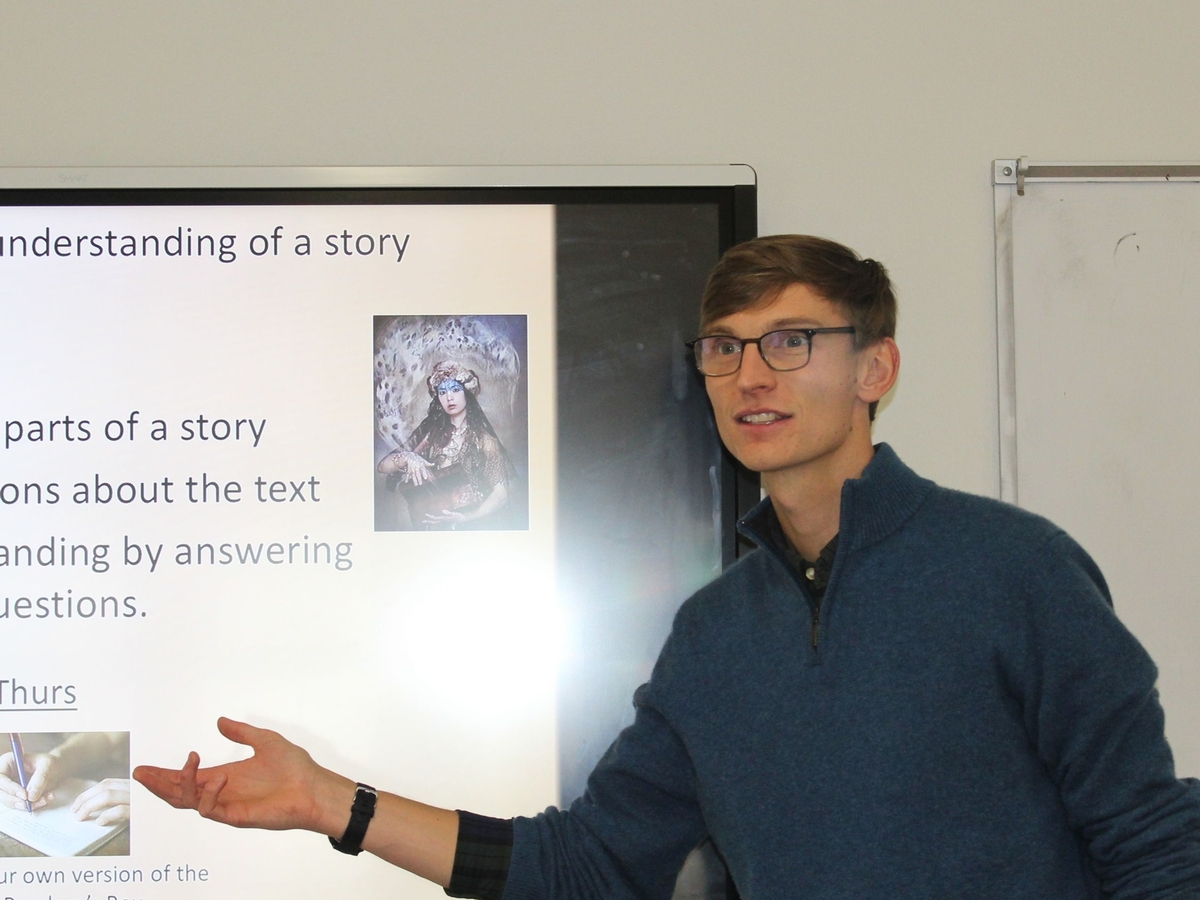Modeling Behavior: How Students Learn

As an Englishman living in California, it can sometimes feel difficult being so far away from friends and family back home. One thing I love, however, is the eight-hour time difference, which means I wake up each morning to a string of WhatsApp messages from people in the UK already at the end of their day. As I brush my teeth and eat my breakfast, I watch videos sent to me about my nephew. I see him stomping in muddy puddles in the park, constructing towers out of popsicle sticks, and snuggling up with his grandad for story time. I am continually astonished by the new things he learns each day, and constantly find myself wondering: where does this learning come from?
A picture of my nephew, Joseph, sitting at my brother’s laptop, his brow furrowed in stern concentration. A video of Joseph driving in his toy car, waving out of the window while saying, “Bye Daddy, I’m off to the office”. A clip of Joseph, stood over his baby brother’s crib, wagging his finger and shushing loudly. Over time, these pictures and videos have led me to the secret: my nephew is not a child genius, he’s the world’s best copycat!
As a teacher, I see this phenomenon lived out every day in my classroom. When I walk into a lesson upbeat and smiling, I’m greeted with cheery responses and positive energy. When my frustration or grumpiness slips out, I see my students’ heads go down, and the mood dampen. Whether it’s the vocabulary we use, the emotions we convey, or the hobbies and interests we practice, children imitate and learn from everything adults do. As a result, as teachers and parents, our number one way to help children learn is to act as and provide effective models.
At Gooden, our faculty strive to do this both in our academic instruction and social and emotional learning. In the classroom, we make modeling a central feature of every lesson. For example, in math, our teachers provide students with worked examples so that the steps that need to be taken to solve a particular problem are clear and understood. Likewise, in English our teachers narrate the decisions and choices they make when writing an essay, supporting students to form their own mental models and gain confidence in their writing decisions.
When helping students to resolve social conflicts and work through their worries and concerns, we model the behaviors we want to promote. For example, during circle times our teachers model empathy, supporting students to put themselves in the shoes of others and view incidents from a different perspective. Moreover, in our advisory program, our teachers provide a listening ear, ensuring that every individual is made to feel valued and understood. Finally, in restorative meetings our teachers work collaboratively with students to solve problems, fostering teamwork and mutual respect.
When I step onto the school campus each day, I try to keep that morning’s video of my nephew fresh in my mind, determined to model the skills and knowledge our children need to learn and flourish. Around me, I marvel at our faculty striving for the same goal, and I savor watching as our Gooden “copycats” profit from absorbing everything they see.
Mr. Matthew Foster is the fifth-grade teacher and director of the Lower School at Gooden. Educated in the United Kingdom, he received his bachelor’s degree from the University of Durham, and his teaching credentials and a master’s in education from University College London. Prior to coming to Gooden, Mr. Foster taught in public schools in underserved areas of London and Oxford, where he developed an awareness of the importance of social and emotional learning and a passion for promoting restorative practices.


This was refreshing and uplifting to read! (Especially with today's headlines!) Thanks Mr. Foster!
Thanks Matthew. Very well said and a good message for the current challenging times. Warmly, Merrily